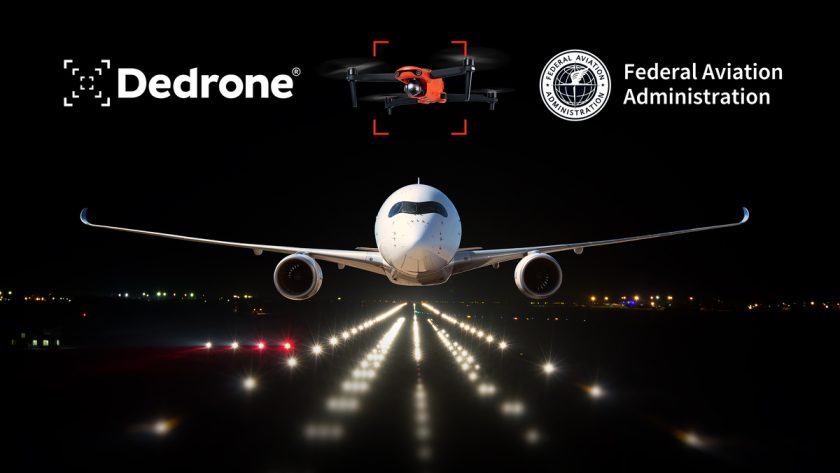Dedrone has today announced an expanded partnership with the Federal Aviation Administration (FAA) under Section 383 of the FAA Reauthorization Act of 2018, which provides for testing of counter-drone detection, tracking, identification and mitigation technologies to develop clearer regulations around the use of these technologies at airports. Dedrone was part of the first round of technologies selected for testing at Atlantic City International Airport and has now been invited to expand to a second airport (to be named at a later date) as part of the ongoing research being conducted by the FAA to make airports safer from disruptions caused by drones.
“The threat of drone disruptions to airports and other critical infrastructure is persistent and escalating. We are honored to continue our work with the FAA to make airports safer for passengers, crew and airport staff by incorporating counterdrone technology into existing airport security apparatuses,” said Aaditya Devarakonda, CEO of Dedrone. “We look forward to further supporting the FAA at this additional airport after successful implementation at Atlantic City International Airport.”
According to the company, DedroneTracker, a sensor-fusion platform providing drone detection, tracking, identification (DTI) and mitigation via sophisticated AI capabilities on the market, is currently being used at both airports. “By taking inputs from multiple sensors including radio frequency (RF), radar, camera and acoustics, DedroneTracker confirms drone presence and determines the precise location of drone,” said the company. “Based on real-time drone behaviour, imagery, known flight modelling and other inputs, the AI engine offers the operator a prioritized queue of targets through autonomous background interrogation while simultaneously tracking multiple friendly drones.
“Dedrone has also been selected to work with the FAA on bringing safe mitigation technologies to airports, including the recently released DedroneDefender precision jammer. DedroneDefender comes equipped with narrow-band jamming to minimize disruption to other devices and meets military standard MIL-STD-810H. This use of narrow-band or “comb” jamming reduces the risk of interference with other systems in the area like Wi-Fi or radar.
“The FAA testing is by invitation only and began in February 2022. It will continue through September 30, 2023 at a total of five airports around the country including Rickenbacker International Airport, Columbus, Ohio; Huntsville International Airport, Huntsville, Alabama; Syracuse Hancock International Airport, Syracuse, New York; and Seattle-Tacoma International Airport, Seattle, Washington, in addition to Atlantic City. The FAA will use the results of the testing in its development of a plan for the certification and authorization of counterdrone detection and mitigation systems in the National Airspace System (NAS) including at airports around the country.
“This work with the FAA constitutes a further expansion of Dedrone’s service to the 30 US federal entities that Dedrone already counts as customers. In fact, Dedrone’s technology is implemented across 40 countries, and used by four of the G-7 nation governments; more than 100 critical infrastructure sites; 30+ airports; 50+ stadiums and 20+ non-US governments. Most recently, Dedrone acquired Aerial Armor to further cement its leadership in the counterdrone industry. The combined company actively provides counterdrone solutions for some of the most high-profile events around the world and works closely with over 70 public safety agencies.”




